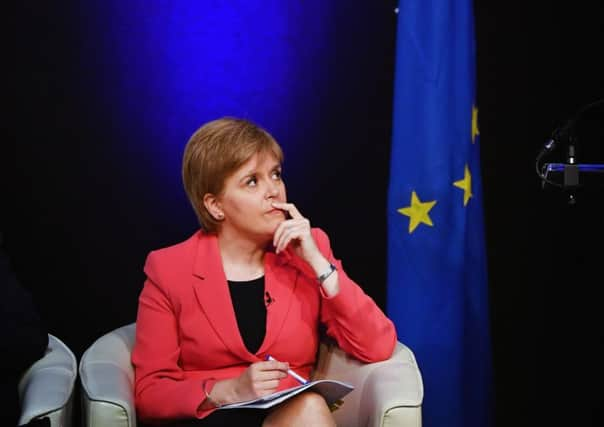Ian Murray: GERS statistics a reality check on independence


The publication yesterday of Scotland’s official accounts with revenue and spending statistics (GERS) showed why.
The Scottish Government’s 2014 Independence White Paper painted a rosy picture of independence. Last week, that paper was dismissed as ‘drivel’ by a former senior SNP advisor, and the SNP MP for East Lothian, George Kerevan – a member of the respected Treasury Committee – has, to his credit, admitted that independence would be difficult for years and years, with huge spending cuts and/or large tax rises necessary to balance the books. The GERS figures starkly demonstrate just how great the challenge would be. Despite the old adage about lies, damned lies, etc, it is actually very hard to hide from hard statistics, especially when they’re your own. It shows just how far down the rabbit hole we’ve gone that some independence supporters are actually raising doubts about the validity of GERS, even though they are produced by the SNP government.
Advertisement
Hide AdAdvertisement
Hide AdThese statistics matter. Not only do they offer an immediate analysis of Scotland’s public finances, they also serve as an indication of Scotland’s financial position shorn of being part of the UK. If Scotland were independent, we would have a fiscal deficit – the gap between what government receives and spends – of £14.8bn. That’s proportionately more than double the UK’s deficit and equates to more than everything we spend on the NHS.
The statistics also show that oil revenues have collapsed. During the independence referendum Nicola Sturgeon promised a ‘second oil boom’. The notorious volatility of oil revenues – sensitive to global events – meant she was never in a position to make that promise.
The GERS statistics must act as a reality check to those calling for another independence referendum. We know that Scotland benefits from pooling and sharing resources across the UK – what’s more, the SNP know it, too: that’s why, just a couple of months ago, they (rightly) fought to maintain the current Barnett arrangements when negotiating Scotland’s revised fiscal framework. Meanwhile, they have gone very quiet about their number one policy promise from the 2015 election: full fiscal autonomy.
Being part of the UK means higher public spending on public services like education and the NHS that we all rely on. The figures show that this arrangement works: spending on public services in Scotland was £12,800 per person, which is £1200 per person greater than the UK average.
Advertisement
Hide AdAdvertisement
Hide AdThe SNP claim they lack the levers to make a real difference, complaining about powers they don’t have without using the ones they do, like full control over income tax. They should be using those powers to to create jobs, invest in education and enhance our public services.
This newspaper has recently reported on the continuing GP crisis, NHS service closures, chronic underfunding of councils, the ‘breaking point’ in our local police, our education service overstretched, and the potential consequences of Brexit for Edinburgh. It’s within the gift of the Scottish Government to act on each and every one of these.
These figures confirm that there’s a strong, positive case for Scotland remaining in the UK – our most important social and economic union. It’s time the SNP acknowledged it, stopped banging on about independence, got on with the job they are elected to do and start delivering for Edinburgh.
Ian Murray is Labour MP for Edinburgh South